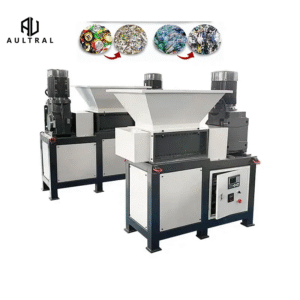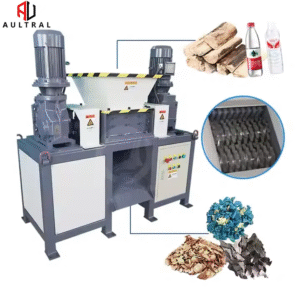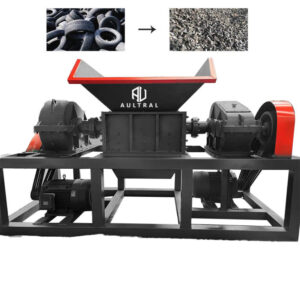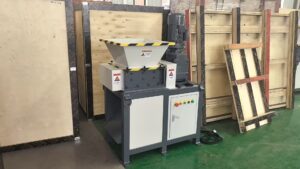Introduction
Shredder machines, also known as shredders or granulators, are essential industrial and office equipment designed to cut materials into smaller pieces for recycling, disposal, or repurposing. These machines play a crucial role in waste management, data security, and material processing across various industries.
From paper shredders in offices to heavy-duty industrial shredders that process metal, plastic, and electronic waste, these machines help reduce waste volume, enhance recycling efficiency, and protect sensitive information. This article explores the different types of shredders, their applications, technological advancements, benefits, challenges, and future trends.
Types of Shredder Machines
Shredders come in various designs, each suited for specific materials and purposes. Below are the most common types:
1. Paper Shredders
-
Used in offices to destroy confidential documents.
-
Strip-cut shredders (basic, less secure)
-
Cross-cut shredders (more secure, produces confetti-like pieces)
-
Micro-cut shredders (highest security, turns paper into tiny particles)
2. Industrial Shredders
Designed for heavy-duty material processing:
-
Single-shaft shredders (for plastics, wood, rubber)
-
Double-shaft shredders (for tougher materials like metal and electronic waste)
-
Four-shaft shredders (high-capacity shredding for mixed waste)
3. Plastic Shredders
-
Used in recycling plants to break down plastic waste into granules for reuse.
-
Common in manufacturing and waste management industries.
4. Metal Shredders
-
Process scrap metal (cars, appliances, aluminum cans) for recycling.
-
Often used in automobile and construction industries.
5. Wood Shredders
-
Reduce timber, pallets, and branches into wood chips for biomass fuel or mulch.
6. Tire Shredders
-
Break down used tires into rubber crumbs for recycling into new products.
7. E-Waste Shredders
-
Dismantle electronic devices (computers, phones) to recover metals and plastics.
8. Medical Waste Shredders
-
Sterilize and shred hazardous medical waste to prevent contamination.
Applications of Shredder Machines
Shredders serve multiple industries with varying requirements:
1. Office & Data Security
-
Prevents identity theft by destroying sensitive documents.
-
Complies with data protection laws (e.g., GDPR, HIPAA).
2. Recycling & Waste Management
-
Reduces landfill waste by processing recyclable materials.
-
Enables efficient sorting and repurposing of plastics, metals, and paper.
3. Manufacturing & Industrial Use
-
Processes production waste (plastic scraps, defective products).
-
Prepares materials for reuse in manufacturing.
4. Automotive & Metal Industries
-
Shreds end-of-life vehicles (ELVs) for metal recovery.
-
Recycles aluminum, steel, and copper.
5. Agriculture & Biomass Processing
-
Converts agricultural waste (crop residues, wood) into biofuel.
6. E-Waste Recycling
-
Safely disposes of electronic waste while recovering precious metals.
7. Healthcare & Hazardous Waste Disposal
-
Destroys contaminated medical supplies securely.
Technological Advancements in Shredder Machines
Modern shredders incorporate advanced technologies for efficiency, safety, and sustainability:
1. Automation & Smart Controls
-
AI-powered sorting systems identify and separate materials automatically.
-
Remote monitoring allows operators to track performance via IoT sensors.
2. Energy-Efficient Designs
-
Low-power consumption motors reduce operational costs.
-
Solar-powered shredders for eco-friendly waste processing.
3. Enhanced Safety Features
-
Auto-reverse function prevents jams.
-
Overload protection shuts down the machine to avoid damage.
4. High-Speed Shredding
-
Industrial shredders now process tons of material per hour.
5. Noise & Dust Reduction
-
Enclosed designs minimize workplace hazards.
Benefits of Using Shredder Machines
1. Improved Security
-
Protects confidential data from breaches.
2. Waste Volume Reduction
-
Decreases landfill usage and transportation costs.
3. Enhanced Recycling Efficiency
-
Prepares materials for easier sorting and reuse.
4. Cost Savings
-
Reduces waste disposal expenses.
5. Environmental Sustainability
-
Supports circular economy initiatives.
Challenges in the Shredder Industry
1. High Maintenance Costs
-
Blades wear out and require frequent replacement.
2. Safety Risks
-
Improper handling can lead to accidents.
3. Regulatory Compliance
-
Must adhere to environmental and workplace safety laws.
4. Initial Investment
-
Industrial shredders are expensive.
Future Trends in Shredder Technology
1. AI & Machine Learning Integration
-
Predictive maintenance and smart sorting.
2. Mobile & Portable Shredders
-
On-site waste processing for construction and events.
3. Biodegradable Blade Materials
-
Reduces environmental impact.
4. Blockchain for Waste Tracking
-
Ensures transparency in recycling processes.
Conclusion
Shredder machines are vital for waste management, security, and recycling. As technology evolves, shredders will become smarter, more efficient, and environmentally friendly. Businesses and industries that adopt advanced shredding solutions will benefit from cost savings, regulatory compliance, and sustainability advantages.
The future of shredding lies in automation, AI-driven efficiency, and greener processing methods—making shredders indispensable in a waste-conscious world.





